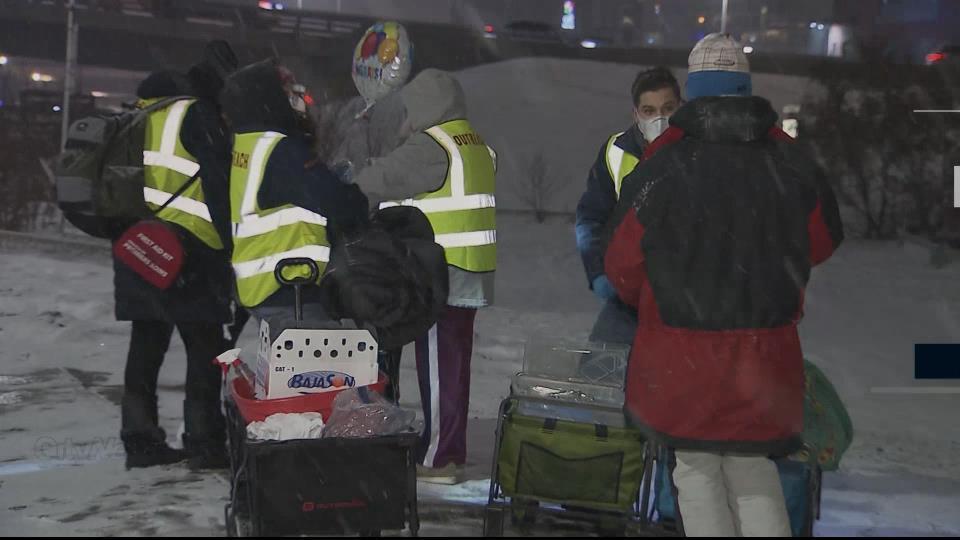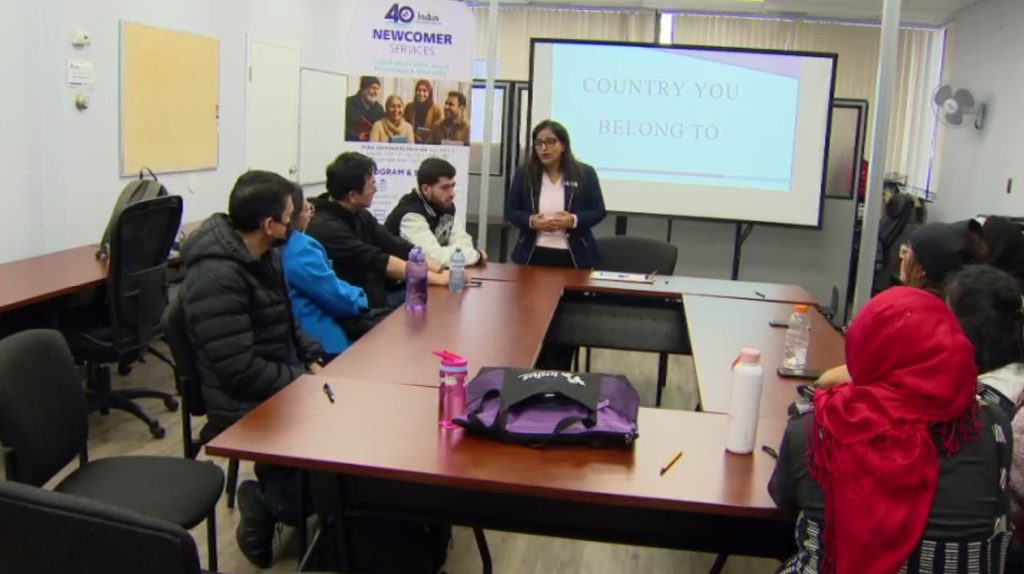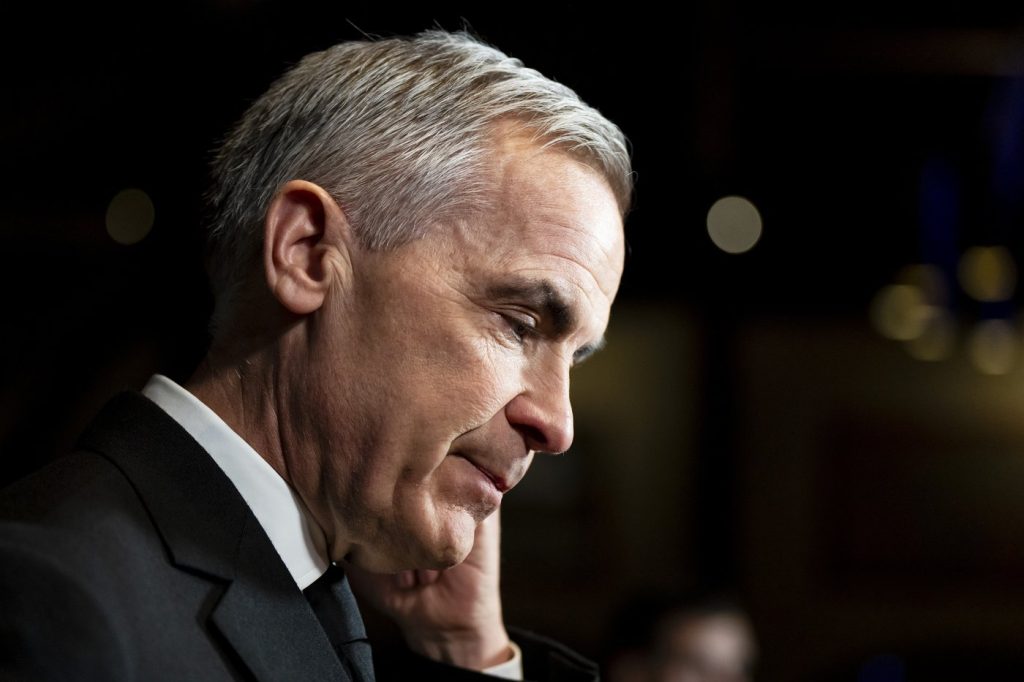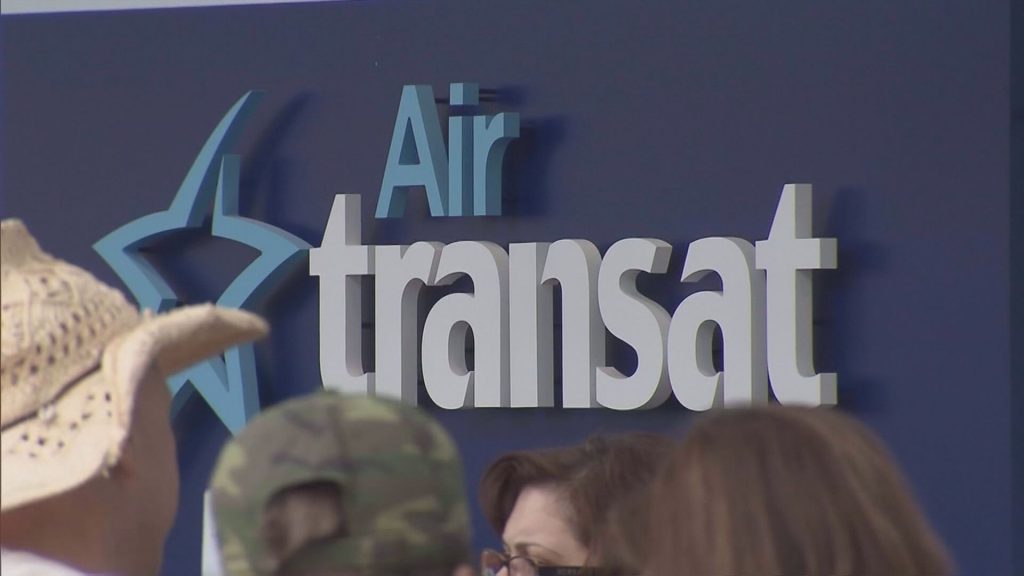‘Perfect storm’ of inflation, high prices driving more into homelessness: advocates

Posted December 19, 2022 12:19 pm.
Last Updated December 19, 2022 12:20 pm.
Social agencies and advocates say rising interest rates and high inflation are pushing more Canadians into homelessness.
Chaz Smith, who was once homeless himself, said some of the clients of his BeTheChangeYYC street outreach group have been on waiting lists for affordable housing for more than five months.
He said with interest rates and inflation on the rise, it could make the rental market more difficult to enter.
“My fear is we’re going to see people default into the rental market that’s already crowded and we’re going to see an increase in homelessness throughout all of Canada,” said Smith, who founded BeTheChangeYYC.
On an evening earlier this month in downtown Calgary, Smith and a group of volunteers were wheeling wagons full of bagged lunches, including meal replacements, vitamin powder and granola. They also handed out socks, emergency blankets, tarps and tents as temperatures that night reached about -20 C.
Before they reached the end of the block, they were surrounded by a group of about 80 peoplewaiting to be handed food and warmer clothing.
Smith and the other volunteers venture out several times a week to provide supplies for those in need.
“It is difficult when you have so many coming at once. This is fairly typical for us right now,” Smith said as he greeted dozens of people, many who he knew by name.
He also spoke to new clients, including one man from Edmonton and another from Winnipeg.
Smith said his group helped more than 17,000 last year and many of them are new to life on the street.
“That’s the scary part,” he said. “I talked to quite a few people who are new to homelessness and you know right away because they’re asking you, ‘where are the shelters?’ They haven’t heard of the housing list and so you ask them, ‘where are you from?'”
Tim Richter, CEO of the Canadian Alliance to End Homelessness, said the homeless sector is in crisis and it’s only going to get worse.
“I think we’re facing a quadruple whammy that’s driving a wave of new homelessness and making homelessness much worse for the people who are already there,” Richter said.
He said there was already an affordable housing shortage, but there are also the lingering effects of the pandemic, the higher cost of living and the opioid crisis.
“You’ve got this perfect storm of terrible news driving people into homelessness and making homelessness, as it is, much more dangerous and more lethal,” he said.
“Homelessness is a kind of a slow-motion crisis.”
Related Stories:
-
Calgary initiative aims to empower city’s unhoused this holiday season
-
Calgary task force set up to tackle homelessness and addiction
-
Homelessness in Canada is still getting worse. What would actually make a difference?
Food banks are also seeing a spike in need, especially in Alberta.
The Hunger Count report, which came out nationally in October, showed Alberta saw a 73 per cent increase in food bank usage since 2019 — the highest across the country.
“The increase in Alberta is really just a perfect storm of low wages, loss of wages, high housing prices, high prices for food and fuel and utilities and all of that coming together at a time when the world was kind of collapsing down on top of us,” said Arianna Scott, the CEO of Food Banks Alberta.
“It’s very similar across the country. Every province across the country you’re seeing increases and struggles.”
Michael Pasma, the interim president of the Calgary Food Bank, said the demand is unprecedented.
“We’re seeing a demand that we’ve not seen before, so it is stretching our resources but we’re able to feed as many people who are coming to our door,” Pasma said.
“Demand is up. If you look at the same time last year, it would be about 30 percent higher.”
He said the food bank is attempting to increase its output to almost 500 hampers a day with the busy Christmas season.
Inflation is also having a dramatic effect on older people in Canada.
Laura Tamblyn Watts, the CEO of CanAge, Canada’s national seniors’ advocacy organization, said dollars aren’t stretching as far as they did and, for the first time, even middle-income seniors are facing poverty.
“Do I put my money on the heating bill or do I buy food and medications? What we are seeing can be summed up with ‘heat or eat.’ If people only have a few hundred dollars a month to manage through ? you don’t have a lot of choices,” said Tamblyn Watts.
“What it means is middle-income (earners) are feeling it harder than ever. (People with) lower income are facing dire circumstances, including the highest rate of homeless seniors we’ve ever had.”








